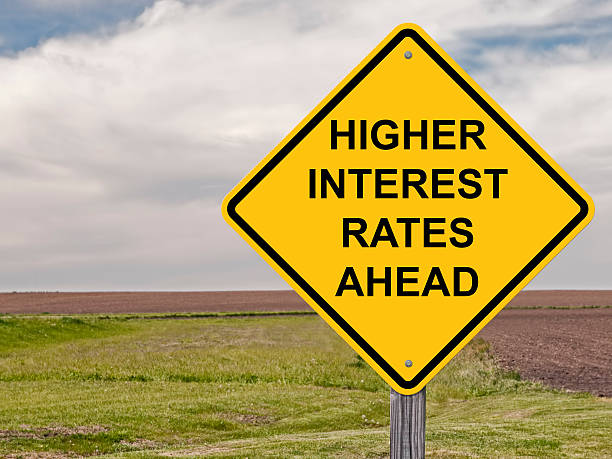With interest rates at their highest for 15 years, and the upward trend likely to continue, many business owners will be considering how to respond to the associated challenges and opportunities of operating in such an environment.
In this blog, Paul Bury, explores the effects of a rise in interest rates on businesses and how they can navigate this changing financial environment.
Interest rates play a crucial role in shaping the financial landscape and have a profound impact on businesses of all sizes and sectors. As the economic climate evolves, it is essential for businesses to understand the implications of rising interest rates and proactively adapt their strategies to mitigate potential challenges.
Increased Borrowing Costs
One of the most significant impacts of rising interest rates is the increased cost of borrowing. Businesses that rely on loans or credit facilities to finance their operations, expansion plans, or capital investments may find it more expensive to service their debt. Higher interest rates result in larger interest payments, which can reduce profitability and strain cash flow. To mitigate this impact, businesses should carefully review their existing debt obligations and consider refinancing options, negotiating better terms, or exploring alternative financing methods.
Investment and Expansion Slowdown
Higher interest rates can deter businesses from pursuing new projects, expansions, or investments. The increased cost of borrowing makes these endeavours less financially attractive, as they may yield lower returns on investment. Consequently, industries such as residential development, manufacturing, and technology that heavily rely on capital investments might experience a slowdown. To navigate this situation, businesses should evaluate the feasibility and profitability of new ventures carefully. Exploring alternative financing methods, seeking equity partnerships, or prioritising efficiency improvements can help sustain growth despite higher borrowing costs.
Consumer Spending and Demand
Rising interest rates also affect consumer behaviour and overall demand. As borrowing becomes more expensive, consumers may reduce their spending, particularly on big-ticket items such as housing, cars, and luxury goods. This decline in consumer spending can have a cascading effect on businesses that rely heavily on consumer demand. Retailers, hospitality and leisure, and other consumer-centric sectors may experience a decrease in sales and revenue. To counteract this impact, businesses can focus on customer retention, diversify their product offerings, and emphasise value propositions that resonate with cost-conscious consumers.
Currency Effects
Interest rate differentials between countries can influence currency exchange rates. A rise in interest rates in one country can attract foreign investors seeking higher returns, leading to an appreciation of the local currency. This appreciation can make a country’s exports more expensive and imports cheaper, affecting businesses engaged in international trade. Export-oriented industries may face challenges as their products become relatively costlier in foreign markets. Businesses operating in this context can explore strategies such as diversifying export destinations, optimising supply chains, and leveraging currency hedging tools to mitigate the currency impact.
Stock Market Volatility
Rising interest rates can introduce volatility in the stock market. Increased borrowing costs and a shift in investor sentiment toward fixed-income investments can lead to fluctuations in stock prices. Businesses relying on equity financing, such as initial public offerings (IPOs) or secondary offerings, may experience changes in investor appetite. To adapt to stock market volatility, businesses should maintain open communication with shareholders, diversify their investor base, and focus on delivering consistent performance and long-term value.
Opportunities for Savers and Lenders
While rising interest rates pose challenges for businesses, they present opportunities for savers and lenders. Higher interest rates lead to increased returns on savings accounts, fixed deposits, and other interest-bearing investments. Savers and lenders can benefit from higher interest income, potentially increasing their disposable income and stimulating certain sectors of the economy. Businesses should consider these changing consumer dynamics and adapt their marketing strategies to cater to the needs and preferences of savers and lenders.
Conclusion
As interest rates rise, businesses must anticipate and respond to the associated challenges and opportunities. By proactively managing their borrowing costs, evaluating investment decisions, diversifying revenue streams, and optimising operations, businesses can mitigate the impact of rising interest rates. Additionally, maintaining flexibility, staying informed about market trends, and fostering strong relationships with financial institutions can help businesses navigate the evolving financial landscape successfully.
While the effects of rising interest rates may vary across industries and businesses, a proactive and adaptive approach is crucial for long-term sustainability. By assessing their unique circumstances and implementing appropriate strategies, businesses can minimise risks and capitalise on new opportunities in an environment of changing interest rates.
Savage Silk works with many intermediaries including financing brokers and lenders who are experienced in assisting businesses with cashflow and short, medium and long-term borrowing. If you would like us to reach out to see how those intermediaries can assist you please call us on 0345 209 4700.
Paul Bury, Consultant, Corporate and Commercial Team

